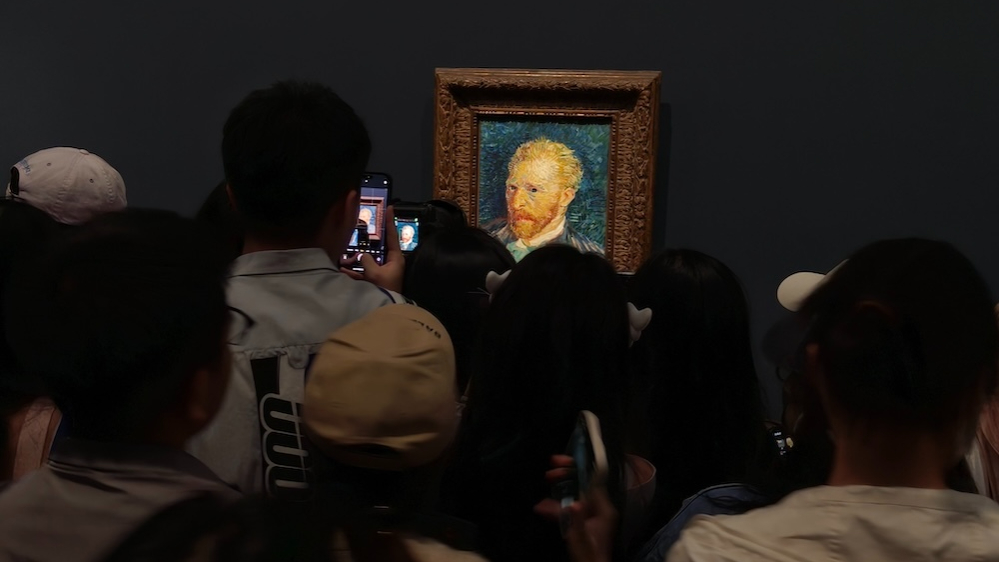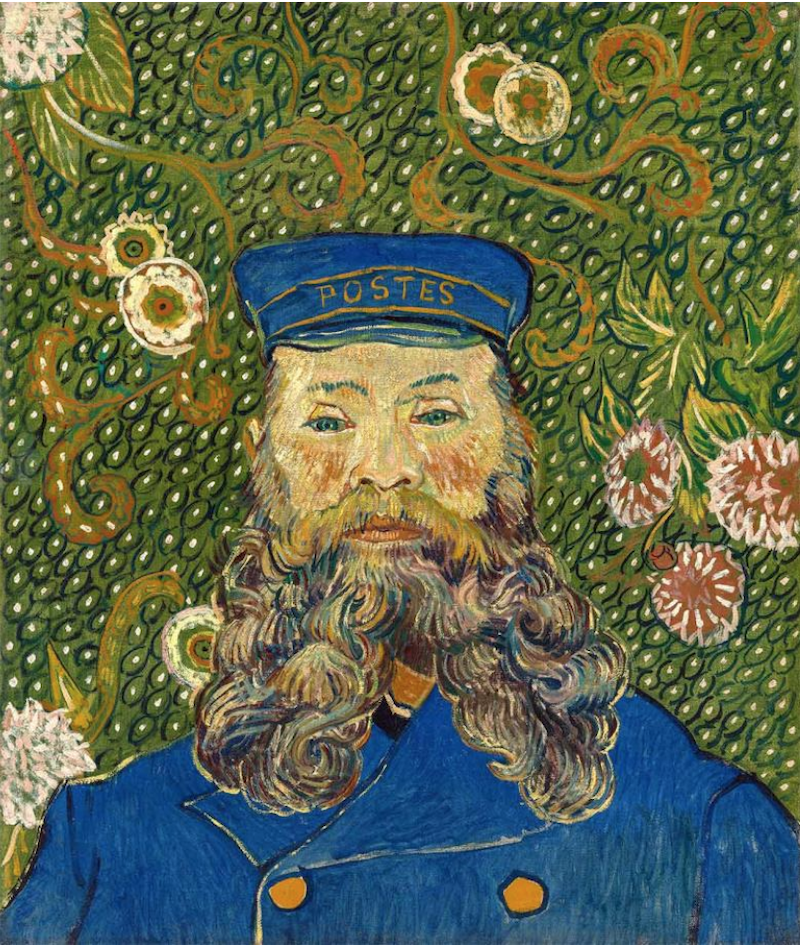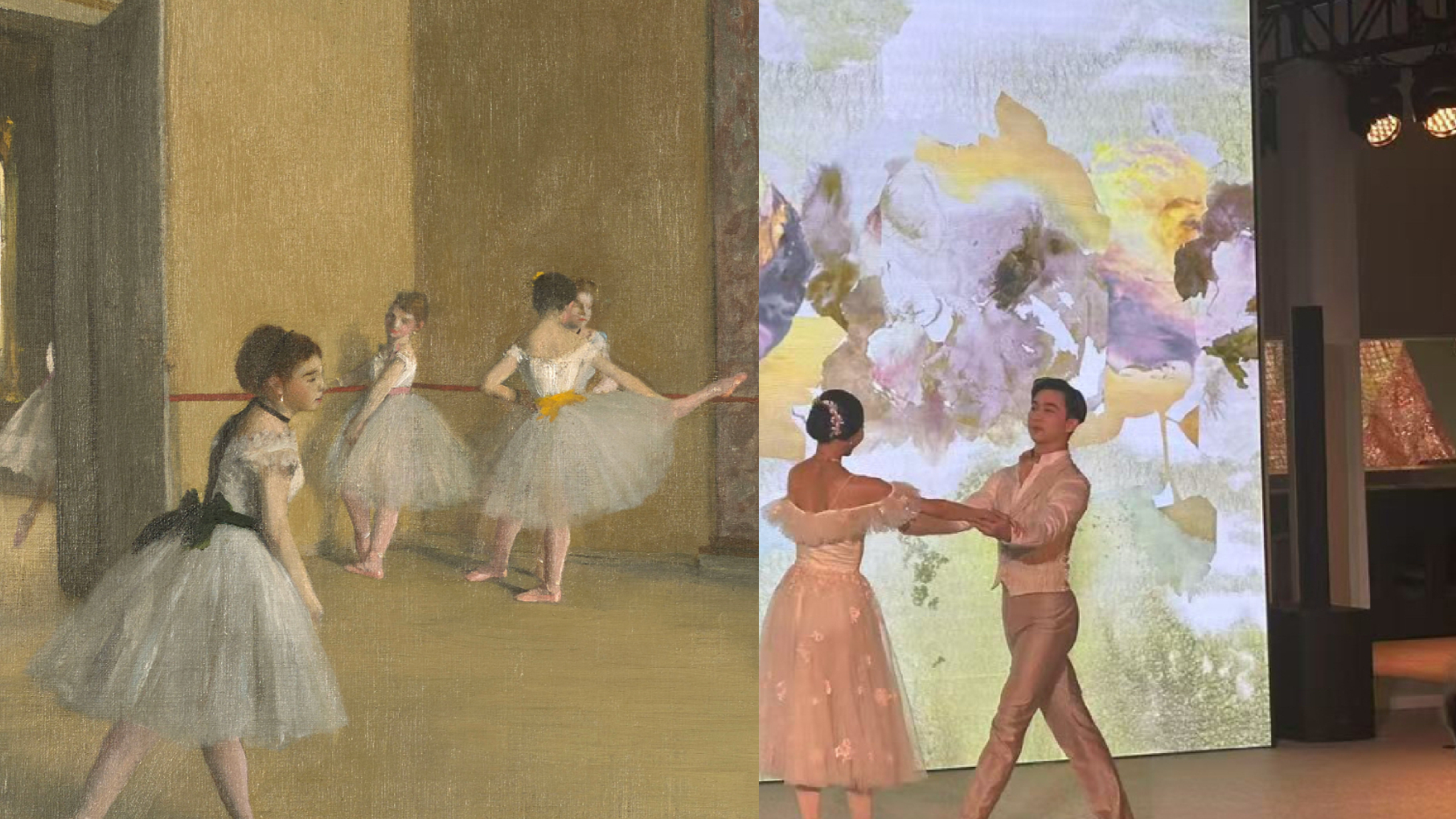
The Paper learned that the exhibition "Van Gogh: A Family Dream of Painting Continues" is currently on display at the Tokyo Metropolitan Art Museum in Japan. Centered on the collection of the Van Gogh Museum in the Netherlands, the exhibition presents Van Gogh's paintings, letters, and rare works by other artists from the Van Gogh family collection, telling the story of the important role played by Theo's family, Van Gogh's brother, in the preservation and transmission of his works after his death.
From the Van Gogh family collection to the establishment of the Van Gogh Museum
The exhibition features Van Gogh paintings primarily from Theo family collection, encompassing his early to late works. These paintings not only outline Van Gogh's creative career but also bear witness to the process by which Theo family brought him to fame. Particularly noteworthy is a self-portrait as a painter. Johanna Bonger (1862–1925), Van Gogh's sister-in-law, recalled that of all of Van Gogh's self-portraits, this one most closely resembled her impression of him when she first met him.

Self-Portrait as a Painter, Vincent van Gogh, December 1887 – February 1888, Van Gogh Museum (Vincent van Gogh Foundation)
The Van Gogh family's collecting history began after Vincent van Gogh's death, with most of the works inherited by his brother Theo. These three family members not only inherited the collection but also contributed to promoting Vincent's works worldwide.
Theo van Gogh (1857-1891), Van Gogh's younger brother, provided him with both financial and emotional support as he aspired to become a painter. In 1873, at the age of 15, Theo entered the art dealership industry through his uncle's introduction, working in galleries in Brussels, The Hague, and London before finally settling in Paris in 1879. He had a strong interest in Impressionism and other avant-garde art, and his work influenced Van Gogh's artistic vision.

Theo van Gogh (1857-1891)
Van Gogh's works became an integral part of Theo's life; he repaid his brother's support through his art, and his apartment was filled with Van Gogh's paintings. After Van Gogh's death, Theo was busy organizing a Van Gogh retrospective, but his health gradually deteriorated, and he tragically passed away six months after Van Gogh's death. Theo's estate included a large number of Van Gogh's works, as well as works by other artists collected by the brothers, ukiyo-e prints, and a large number of Van Gogh's letters.

Johanna Bonger (1862–1925)
After Theo's death, his wife Johanna Bonger (1862–1925) took on the responsibility of managing his vast estate. Born into a middle-class family in the Netherlands, Johanna worked as an English teacher and translator there before marrying Theo in 1889. After Theo's death in January 1891, she returned to the Netherlands, inherited half of his estate, and managed their son's estate until he was 21 (in 1911). Johanna dedicated her life to promoting Van Gogh's art, successfully making his talent known to the world through lending and selling his works, as well as compiling and publishing numerous letters. In 1924, a year before her death, she sold "Sunflowers" to the National Gallery in London, further solidifying Vincent's reputation. By the time Johanna Bonger died in 1925, Van Gogh's works had gained worldwide renown and were exhibited in museums around the globe.

Almond Blossoms in Full Bloom by Vincent van Gogh
Vincent Willem van Gogh (1890–1978), Van Gogh's nephew, grew up surrounded by Van Gogh's works. Van Gogh's famous painting, *Almond Blossoms*, was created and gifted to him by Van Gogh to celebrate his birth. Vincent Willem van Gogh worked as an engineer after growing up, and from 1945 onwards, he became deeply involved in the Van Gogh family's collection and resolved never to sell any more Van Gogh paintings. In 1960, the Vincent van Gogh Foundation was established, and in 1962, he transferred ownership of most of his collection to the foundation. In return, the Dutch government began constructing the Van Gogh Museum to permanently exhibit Van Gogh's works to the public. The Van Gogh Museum officially opened in 1973.
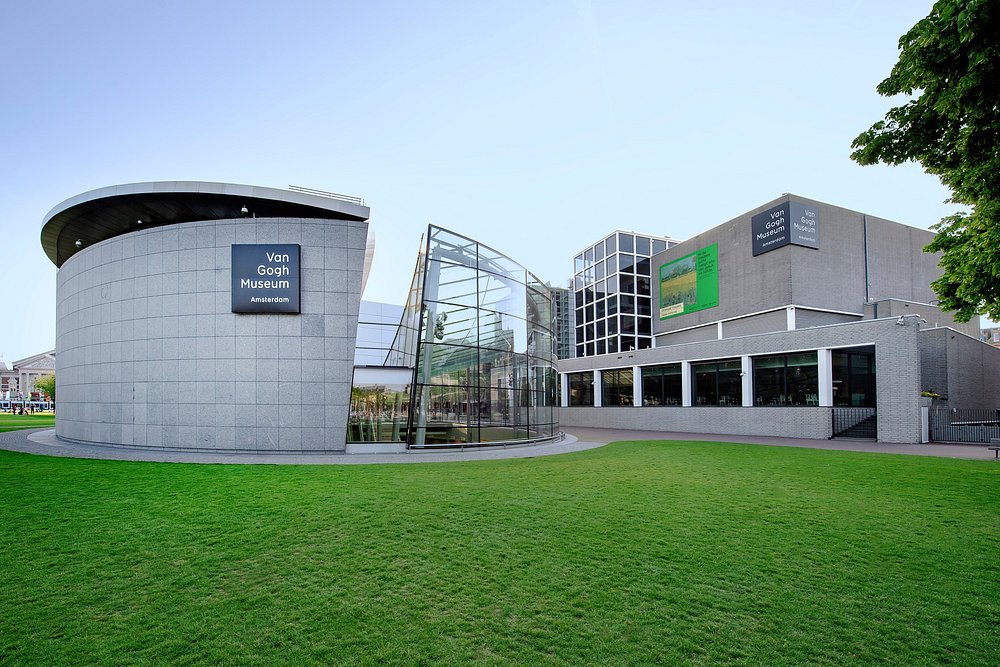
The Van Gogh Brothers' Collection
In addition to Van Gogh's paintings, the exhibition showcases many rare pieces from the collections of the Van Gogh and Theo brothers. Their collections not only convey the atmosphere of the era in which they lived but also provide important clues for understanding Van Gogh's art.
Van Gogh and Theo began working in galleries in their teens, and affordable printmaking became an integral part of their lives from a young age. They bought prints (both originals and reproductions) and occasionally gifted each other works. Van Gogh, determined to become a painter, was particularly influenced by illustrations in French and British magazines. In Paris, he also began collecting contemporary art. Van Gogh exchanged his own works for some of these collections, thus gaining insight into the opinions of other painters regarding his work. Van Gogh was especially passionate about buying ukiyo-e prints, from which he drew artistic inspiration.

Portrait of Vincent van Gogh, John Peter Russell, 1886, Van Gogh Museum (Vincent van Gogh Foundation)
"Portrait of Vincent van Gogh" is a portrait of Van Gogh painted by John Peter Russell (1858–1930), one of Van Gogh's close friends and an Australian Impressionist painter. In the painting, Van Gogh stands sideways, turning his head to look out of the frame, making direct eye contact with the viewer, holding a paintbrush in his right hand. This painting was one of Van Gogh's favorite portraits. In a letter to Theo from the Saint-Rémy asylum, Van Gogh requested, "Please cherish the portrait Russell painted for me. It is very important to me." Some believe that, in return, Van Gogh gave Russell a still life painting of three shoes, painted in Paris. Russell was an important figure in the early introduction of Impressionism to the Australian art scene. Van Gogh met and befriended him in Paris, and although Van Gogh later moved to southern France, the two maintained close contact.

Paul Gauguin, *Paris in the Snow*, 1894, oil on canvas.
"Paris in the Snow" is a work Gauguin created in 1893 after returning from a two-year trip to Tahiti. It depicts the snow scene he saw outside his Paris studio window. Under the sunlight, a corner of the city covered in snow presents a vivid and beautiful sight.
This work did not belong to the Van Gogh brothers' collection, but rather to Johanna Bonge, Van Gogh's sister-in-law. Gauguin spent two months with Vincent van Gogh in Arles, southern France. He contacted Bonge to retrieve three Van Gogh paintings that he owned. This work is believed to be one of the pieces Gauguin gifted to Bonge as a token of his gratitude.

Utagawa Kunisada's "The Night Shadow of Hanagenji" (1861)
In establishing his new mode of expression, Vincent van Gogh referenced Japanese art and was deeply influenced by its ideas. In Arles, he hung ukiyo-e prints in his studio and wrote to Theo: "Please consider this. Isn't what the Japanese teach us like a new religion? They live so simply, integrated with nature, as if they themselves were flowers blooming in the fields. I feel that if I could learn from Japanese art, I would become as happy and cheerful as they are, and even we, who are bound by education and customs, could naturally return to nature."

Ernest Quost, *The Garden in Full Bloom of Hollyhocks*
The main subject of this work is a blooming, vibrant hollyhock. Van Gogh highly praised Couture's depiction of hollyhocks, and during his work in southern France, he considered painting sunflowers in a similar style. Letters from Van Gogh's stay in Auvers reveal that he planned to visit Couture in Paris and attempt to acquire his works.
Van Gogh's paintings and drawings
Vincent van Gogh decided to become a painter relatively late, making the decision in 1880 at the age of 27. For the first three years, he honed his drawing skills primarily in The Hague, before beginning to paint in oils in Nuenen. In 1886, he went to Paris, realizing his own style was outdated, and began adopting new brushstrokes and color techniques, creating his unique style. In February 1888, he moved to the south of France, spending a year and three months in Arles and a year in Saint-Rémy-de-Provence, finally establishing his distinctive style. In May 1890, he moved to Auvers-sur-Seul-Oise, a suburb of Paris. Despite his continued exploration of new artistic possibilities, he ultimately shot himself in the chest and died on July 29th at the age of 37. In his short ten-year career as a painter, he created a vast and astonishing body of work.

Farmhouse, by Vincent van Gogh
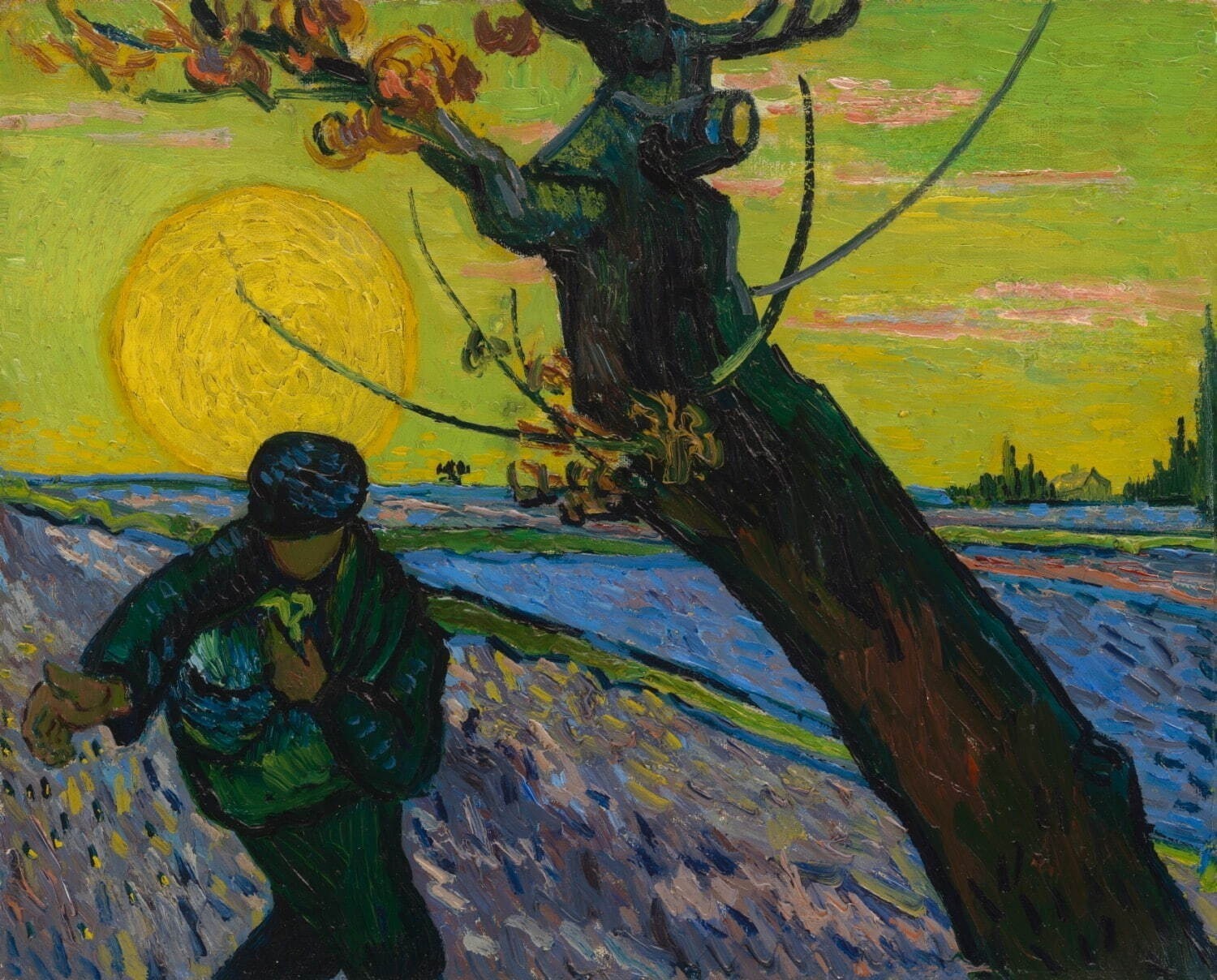
The Sower, by Vincent van Gogh
The Van Gogh family inherited more than 200 paintings and 500 drawings and prints, which are now housed in the Van Gogh Museum, forming the world’s largest Van Gogh collection.

Vincent van Gogh, *Head of a Woman*, April 1885, oil on canvas.
In the early stages of his artistic career, Van Gogh aimed to become a painter depicting peasants, creating numerous studies. These works eventually culminated in his masterpiece from his Dutch period, *The Potato Eaters*, and the exhibited *Head of a Woman* is one of them. During this time, Van Gogh studied color theory through books and experimented with various methods in his work. In this painting, the effect of complementary colors is also employed. Due to the darker overall tone, it may not be easily noticeable, but the face and hat in the painting exhibit reddish tones, creating a striking contrast with the green of the clothing and other parts of the garment.

Vincent van Gogh, *Vase with Anemones*, Autumn-Winter 1884, oil on canvas.
As his interest in color theory deepened, Van Gogh began to explore still life painting, a subject he had rarely touched before, because he believed it was an excellent method for color training. In late autumn and early winter of 1884, he began creating still lifes of plants. In this work, anemones and several types of leaves that change color in autumn are combined. The anemone itself does not flower; the painting depicts its silvery-white pods that grow in autumn. Because of the plant's unique coin-like shape, Van Gogh associated it with feelings of melancholy and parting.

"Vase with Gladiolus and Asters", Vincent van Gogh, August-September 1886, Van Gogh Museum (Vincent van Gogh Foundation)
Van Gogh paintings for sale by Johanna Bunger
Before marrying Theo, Bunge had no particular background in art. However, during her time living with Theo in Paris, she gradually acquired knowledge of modern and contemporary art, including that of Van Gogh. After inheriting a large number of Theo's works, Bunge also became familiar with private collectors, museums, and the art market. She regularly sold her works, both to support her family and to build on Vincent van Gogh's reputation.

The accounting books recorded the sales list of Van Gogh's works.
The family accounting books of Theo and Bunger demonstrate Bunger's efforts in this regard. After Theo's death, detailed records of the sale of Van Gogh's works were kept, detailing which works Bunger sold, when, at what price, and to whom. The more than 170 paintings and 44 works on paper recorded in the books have been further verified and are invaluable resources for the study of Van Gogh.

Vincent van Gogh, *The Vegetable Garden at Montmartre*, 1887, oil on canvas, Stedelijk Museum Amsterdam
The painting *The Vegetable Garden of Montmartre* is currently housed in the Stedelijk Museum Amsterdam. The museum held a major retrospective of Van Gogh in 1905, showcasing over 470 works, which laid an important foundation for the artist's reputation. *The Vegetable Garden of Montmartre* was one of Van Gogh's works created in Paris, depicting the tranquil landscape of Montmartre, still retaining its rural charm. Johanna Bange also recorded the sale of this work in her accounting books.
The exhibition will run until December 21.
